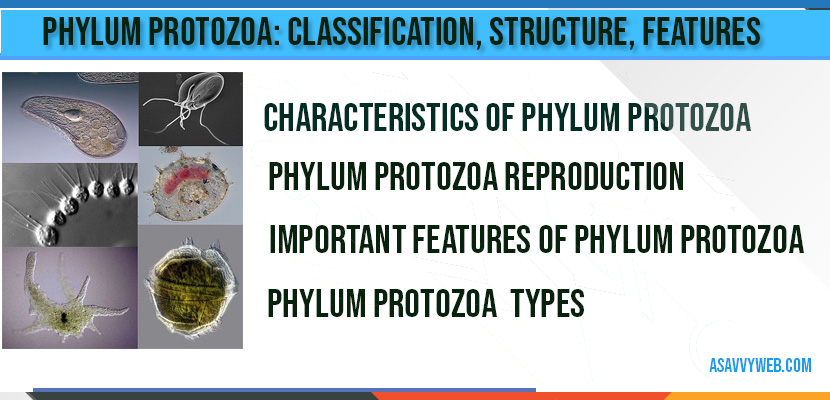There are around 30000 species under this phylum and protozoan’s are unicellular animals which carry out all the vital functions such as nutrition, respiration and excretion etc and the parasitic protozoans cause disease. The term protozoa was used by Goldfuss in 1818.
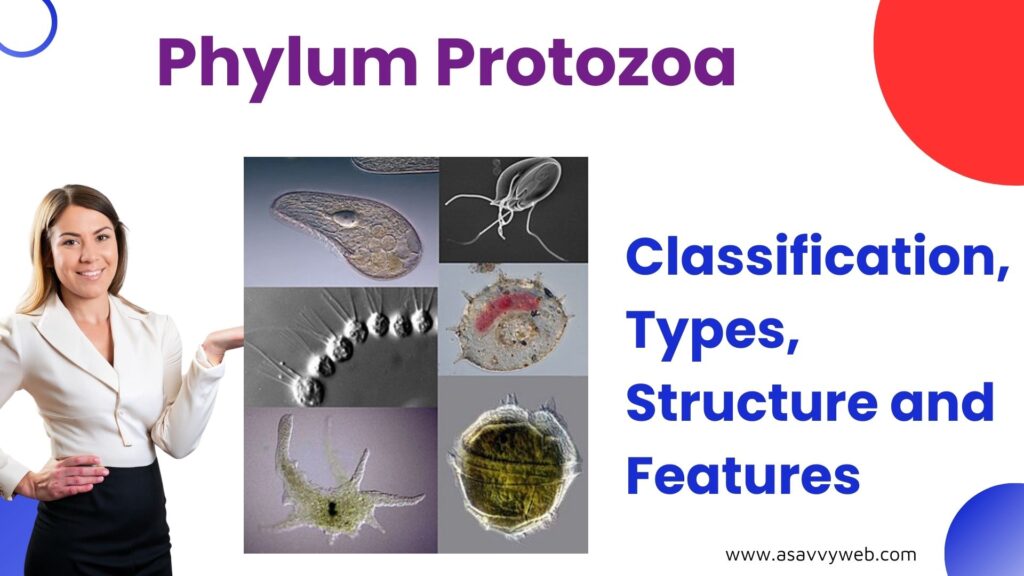
Characteristics of Phylum Protozoa
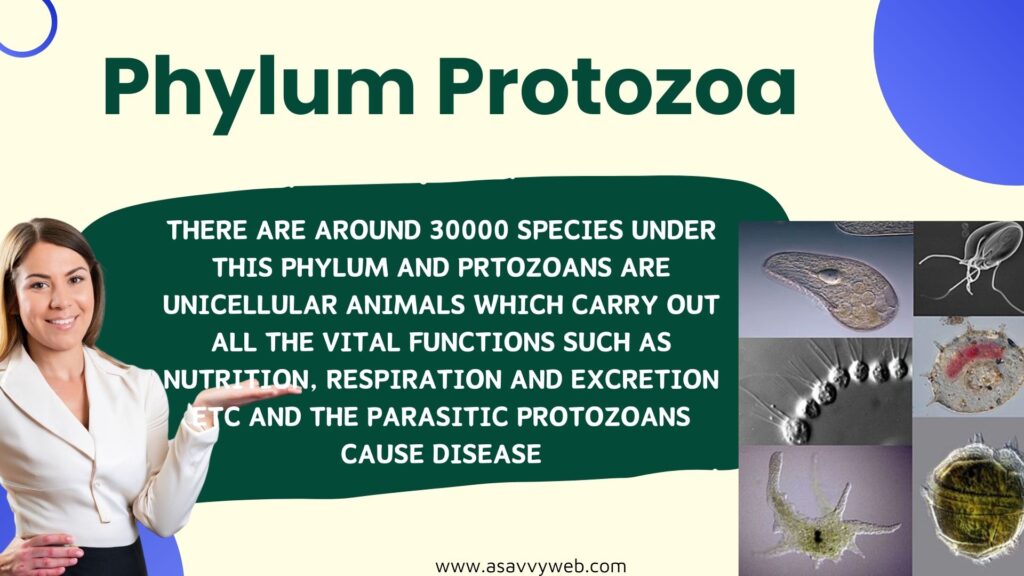
- These are minute and microscopic aquatic organisms.
- These are unicellular organism.
- All the functions of an organism are performed by one cell. So these organisms are called unicellular organisms
- These are solitary or colonial, free living or parasitic or symbiotic organisms. Protozoans are Entamoeba histolytica, plasmodium etc.
- These are mostly aquatic organisms (fresh water or marine).
- The shape of the body may vary i.e irregular, oval, spherical, elongated or flattened.
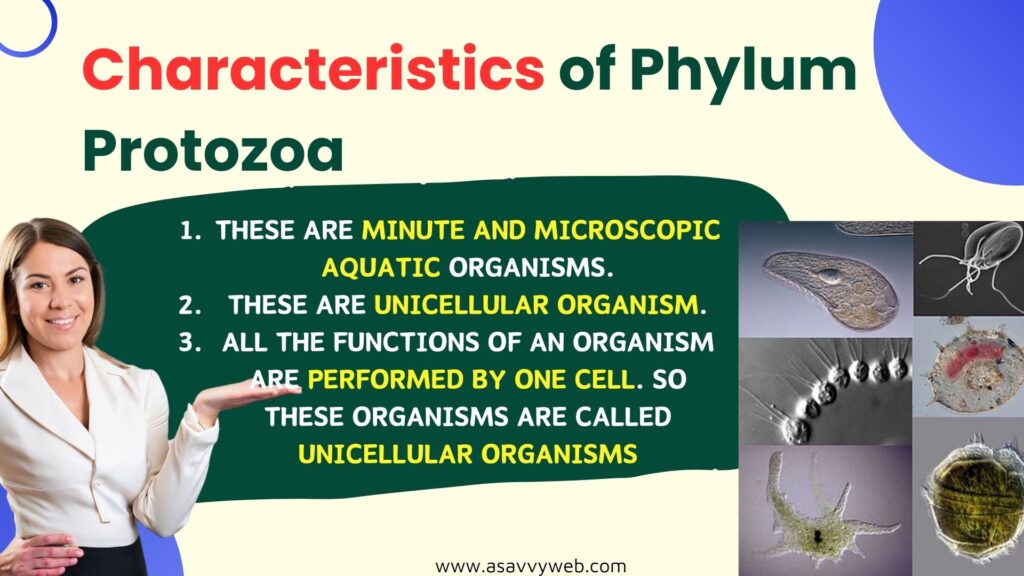
For ex: Amoeba irregular, Noctilluca (spherical), Tryponosoma (Elangated), Paramecium (Flattened). Locomotion by finger like pseudopodia, flagella, cilla etc. eg: Pseudopodia (Amoeba), Flagella (Euglena), paramecium(cilla).
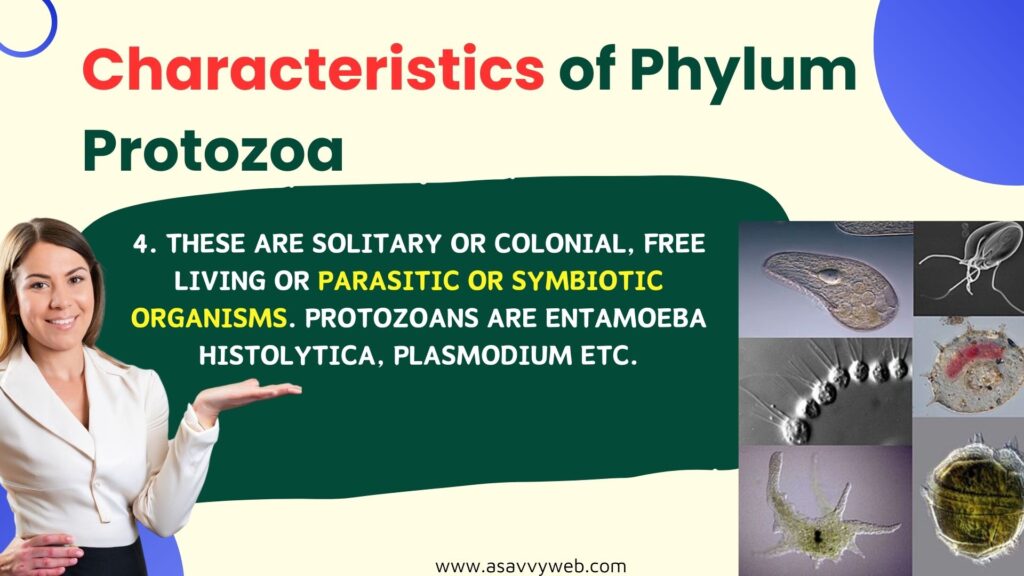
- Respiration takes place through general surface of the body.
- Excretion takes places through the general surface of the body or through contractile vacuole.
- Cytoplasm is differentiated in to outer ectoplasm and inner endoplasm. They may be uninucleate, binucleate or multinucleate
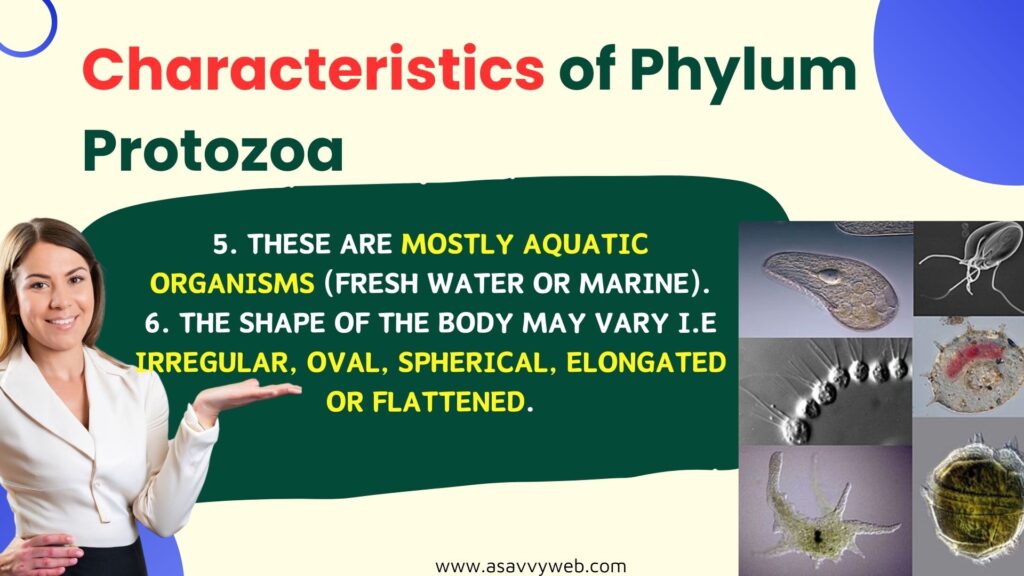
Phylum Protozoa Reprocuction:
Phylum Protozoa Asexual reproduction occurs through process like binary fission and multiple fission. Sexual reproduction occurs through conjugation Eg: Amoeba, Euglena, Paramecium etc.
Important Features of Phylum Protozoa:
- Amoeba is a freshwater living eukaryote organism seen in fresh water habitats.
- It is minute unicellular and microscoping measuring about 800m microns in size. Amoebae occur not only among the other ptrotoans but also amongst fungi, algae and other microscopic animals.
- It is discovered in 1755 by August Johann Rosel von Rosenhof.
- It is universal in distribution and has no definite shape
- It is commonly called as the proteus animal cule as it resembles the Greek god who has no shape
- Body is covered by a thin plasma membrane enclosing a fluidly cytoplasm and nucleus.
- Outer surface is drawn into a number of temporary locomotory tubular structures called pseudopodia of varying lengths.
- Cytoplasm is differentiated into a interchangeable outer gel like cytogel and inner fluidy cytosol.
- A number of fine granules of inorganic and organic substances are seen showing Brownian movement in the cytosol.
- Besides a vesicular nucleus, cytoplasmic inclusions commonly seen are the contractile vacuoles for osmoregulation and food vacuoles having food articles.
- The organisms reproduces binary fission during favourable conditions and multiple fission or encystation during unfavourable conditions.
- An Amoeba often called amoeboid, is a type of cell or organism which has the ability to alter its shape, primarily by extending and retracting pseudopods.
Phylum Protozoa Divided in to How Many types:
Phylum Protozoa is divided into five classes and they are;
- Mastigophora – Locomotory organ is flagella. Eg: Euglena, Giardia, Trypanosoma
- Sarcodina – Pseudopodia is the locomotory organ eg: Amoeba, Entamoeba, Arcella
- Sporozoa – Lack locomotory organ and all are parasites eg: Plasmodium, Monocystis.
- Ciliata – Locomotory organ is cilia. Eg: Paramecium
- Suctoria – Adults without locomotory organs. Eg: Ephelota

